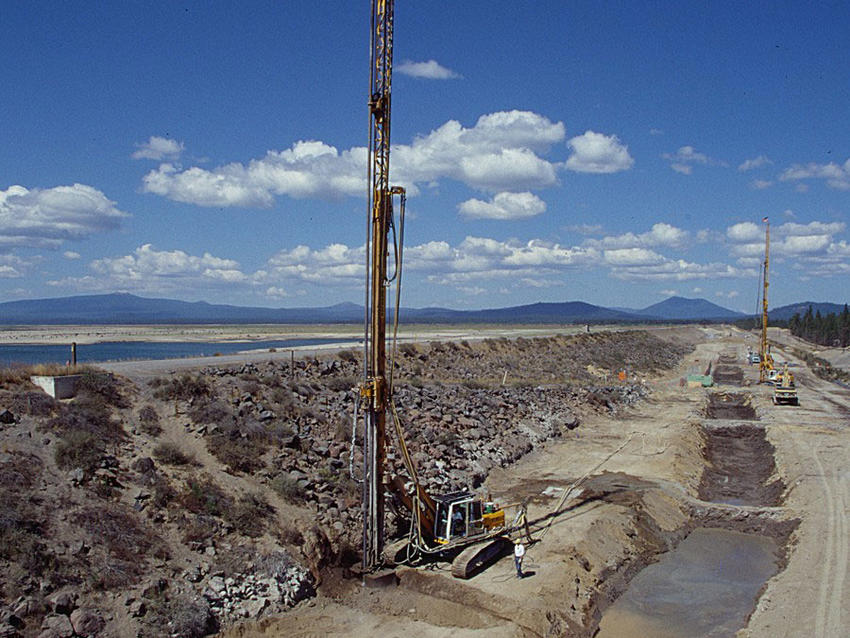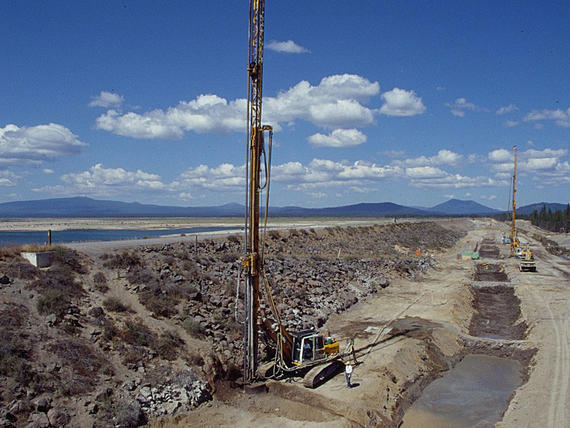Wickiup Dam was built on materials that were likely to liquefy in the event of an earthquake. Keller was able to stabilize the soil in place to prevent this occurrence.

The project
Wickiup Dam is a zoned, rolled earth-fill embankment with a main river embankment section height of 100 feet and a crest elevation of 4,347 feet. The main embankment transitions into a 3-mile-long, 40-foot high dike section on the left abutment. The dam is founded on bedrock while the left abutment dike is founded on deep and bedded fluviolacustrine deposits.
The challenge
Analysis of the foundation materials in the left abutment dike indicated that two separate layers of diatomaceous silt and one layer of volcanic ash are likely to liquefy if the dam is subjected to the design earthquake.
The solution
SuperJet grouting is a drilling technique that hydraulically mixes large diameter columns of soil with grout in situ. As the general contractor, Keller installed 854 soilcrete columns along a 2,250-foot length of the dam toe. SuperJet grouting allowed the liquefiable foundation soils to be targeted for stabilization in situ, allowing normal reservoir operations and reducing the inherent risks associated with an excavate-and-replace alternative. Additionally, the jet grouting program significantly reduced the environmental impacts of construction operations on the pristine location.
